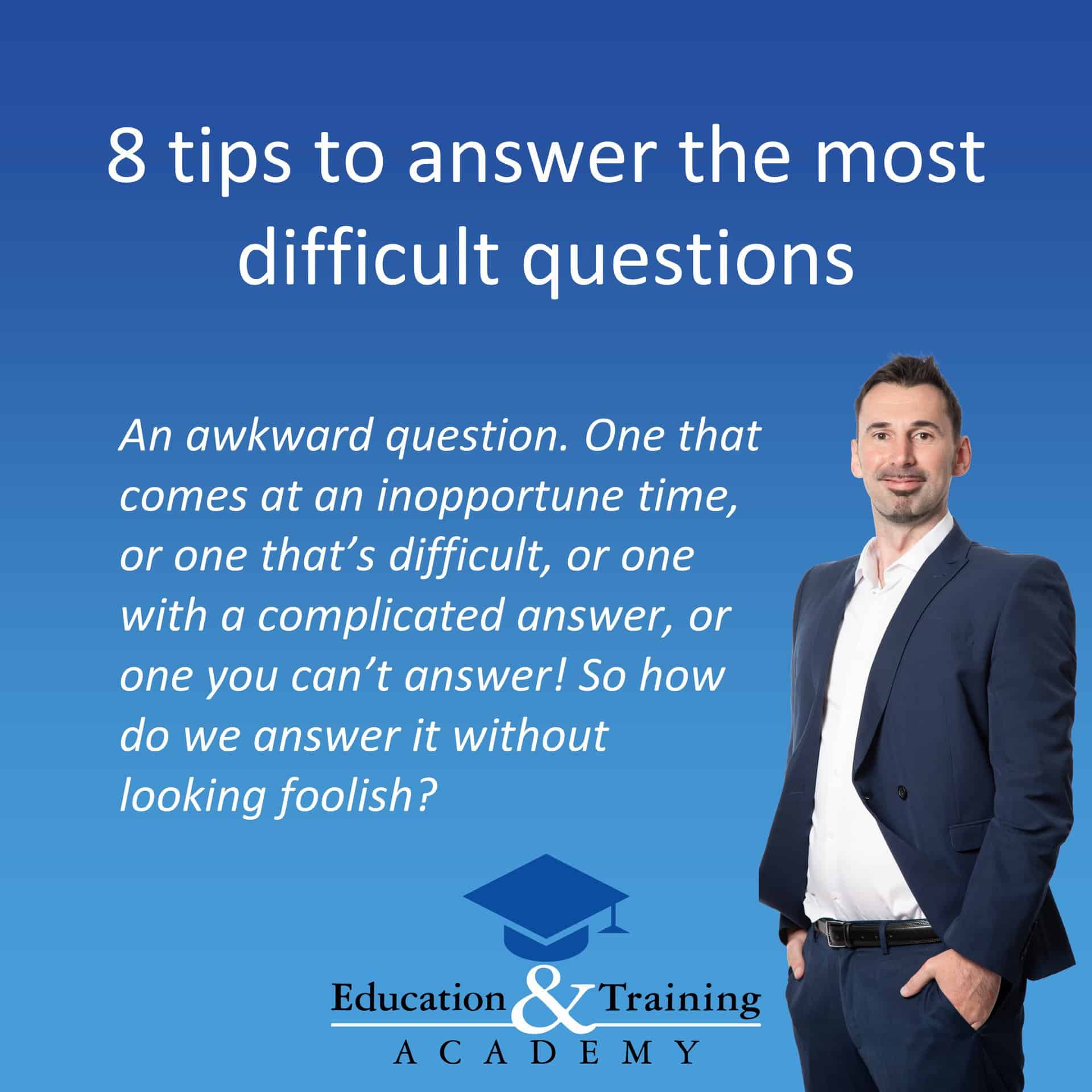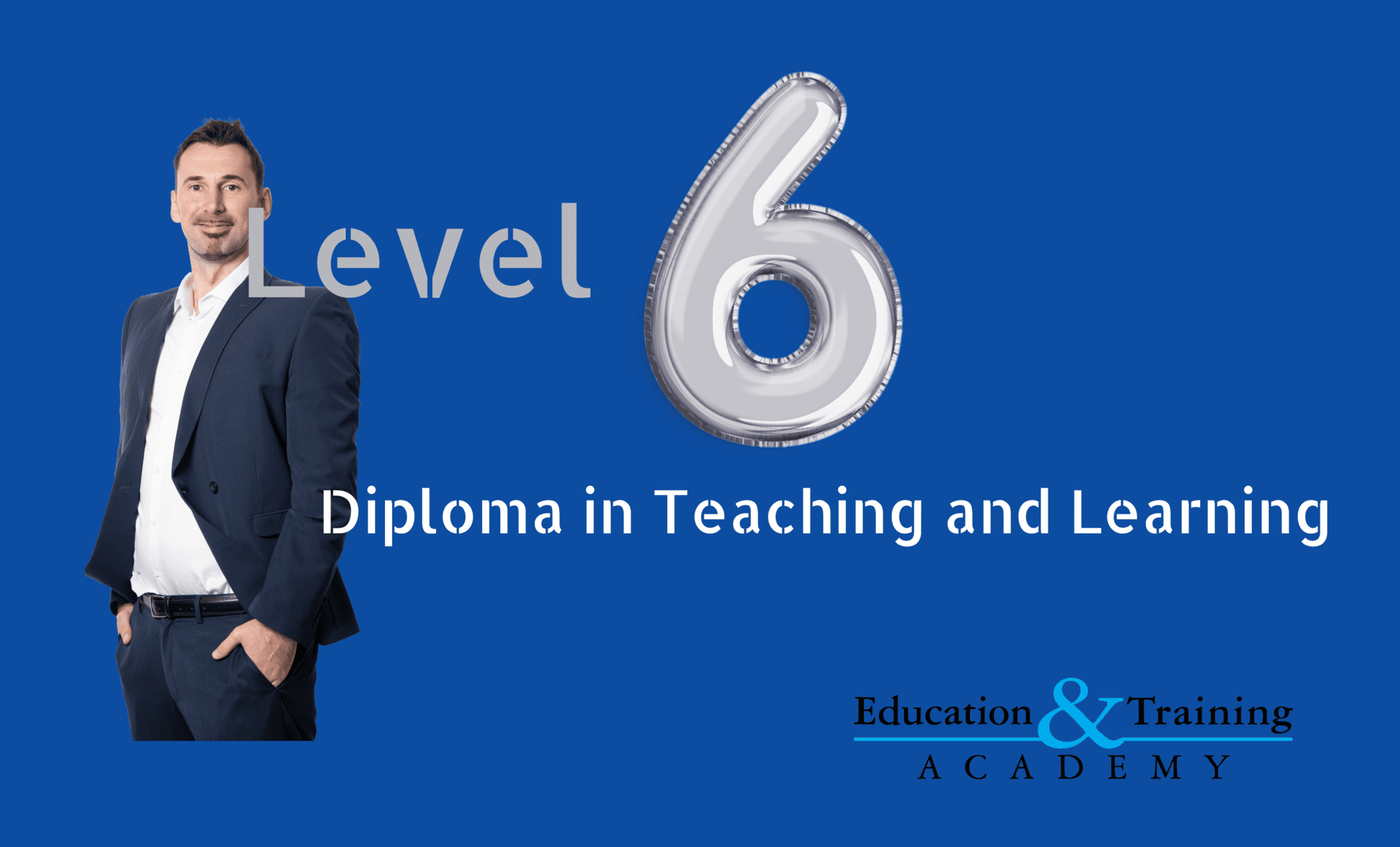
8 tips to answer the most difficult questions
One fear many new teachers have particularly when enrolled on the Level 3 Award in Education and Training (AET) is that awkward questions can undermine your confidence and your credibility. An awkward question. One that comes at an inopportune time, or one that’s difficult, or one with a complicated answer, or one you can’t answer! So how do we answer it without looking foolish?
- During everyday life, we will be asked questions, so how do you usually respond? Do you take a minute to think about your answer before launching into an explanation? or
- Do you interpret their question as a challenge of your authority/knowledge/intelligence and become defensive?
There are multiple ways to answer any question and the way you respond will help to build positive relationships with your learners as well as facilitating constructive debates.
Questions will be asked, some with the potential to throw your lesson off course or set a bad tone in the room if not handled well.
Some teachers can even inadvertently come across as rude or dismissive when answering questions, simply because they feel attacked or they feel they’ll lose momentum.
So, I will give you tips we share in our Level 3 Award in Education and Training to ensure that when you respond, you come across as professional and knowledgeable.
1. Tell the class in advance when you will be taking questions
One of things that can sometimes throw you off course is being asked a question when you are mid-flow through a presentation or least expect it. It can interrupt your train of thought and momentarily put you off balance. Agree when you will take questions so you can prepare for them.
One way to avoid this is to agree in advance when you will be taking questions; anytime, at the end of each section, or at the end of the presentation. This way you won’t be surprised when they come up. In the Level 3 Award in Education and Training, I am familiar with the content so I allow questions at any time but while you are starting out, restrict it to when you are ready.
2. Anticipate questions in advance
Whilst you are preparing your session plan, think about the questions you might be asked around the content and formulate your answers ahead of time. Go back through your materials and look at the content through the eyes of your learners and try to anticipate. Get someone else to ask some questions so you can prepare. You won’t be able to predict every question in advance, but by giving it some thought it will give you a foundation on which to base your answers and hopefully make it clearer to you how to handle questions during a presentation that you might be expecting! Even when I’m teaching the Level 3 Award in Education and Training, I am still getting asked new questions.
3. Realise that questions are a good thing
All questions are good questions, it shows that your learners are interested. Either they want more information, they need clarification, they’re curious to know more, or they want to test your thinking, logic, and recommendations. They should be taken as a positive.
4. Pause before giving your answer
Regardless if you know the answer straight away, wait. There are 3 main reasons for this:
It gives the person time to finish their question, and add any clarifying points.
It shows that you are taking the time to consider the question, which shows respect.
It gives you time to think of the best answer, and deliver it eloquently, rather than launching in, rushing through, and coming across as confused or uncertain.
5. Clarify the question before answering
One of the best communication techniques teaching to clarify and even repeat or paraphrase a question or point someone is making to you, as it helps avoid misunderstandings. Allow the questioner to expand or fine tune their point so it reduces the chance you’ll give the wrong answer. Repeating or paraphrasing a question gives you some extra thinking time.
6. Utilise other people
Don’t be afraid to invite other people to contribute also. It creates a debate within your classroom and gives you more time to answer. Better yet, it allows others to get involved.
7. Be honest if you don’t know the answer
We all have to admit to bluffing our way through an answer to a question we’re just not 100% sure of every now and then but teaching is not the time for it. Making something up will make you come across like you don’t know what you’re talking about, which can really undermine your confidence. Google is your best friend, we need to encourage digital skills so learners can get an immediate answer and gets everyone involved by asking them to research then and there.
8. Check-in with the questioner after you have given your response
After you have finished answering, always check understanding to confirm you have met their needs. “Does that answer your question?”
By learning our 8 tips to answering questions, after you’ve completed your Level 3 Award in Education and Training, you will be calm knowing you can deal with any curveball thrown at you.
Book onto our Level 3 Award in Education and Training now.


